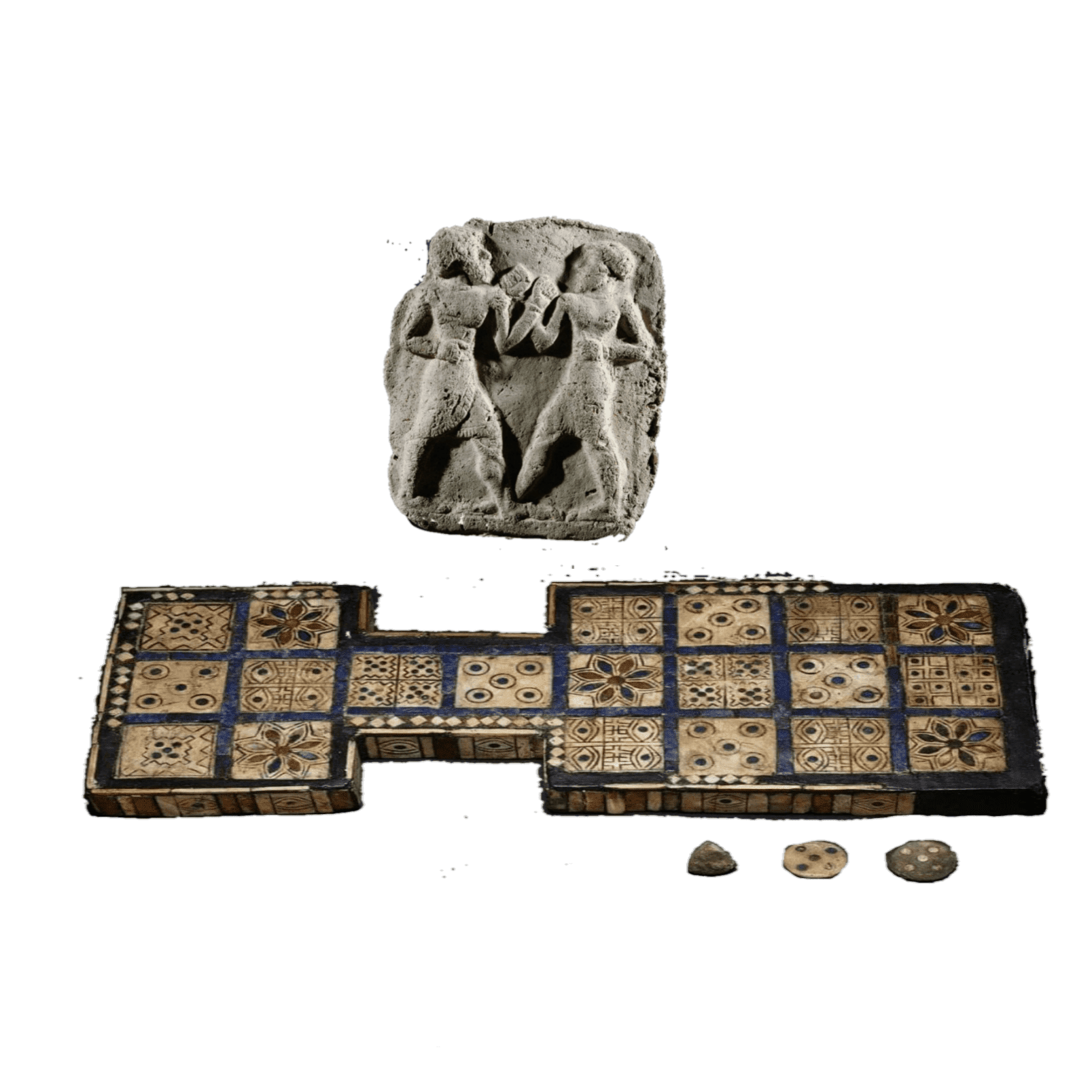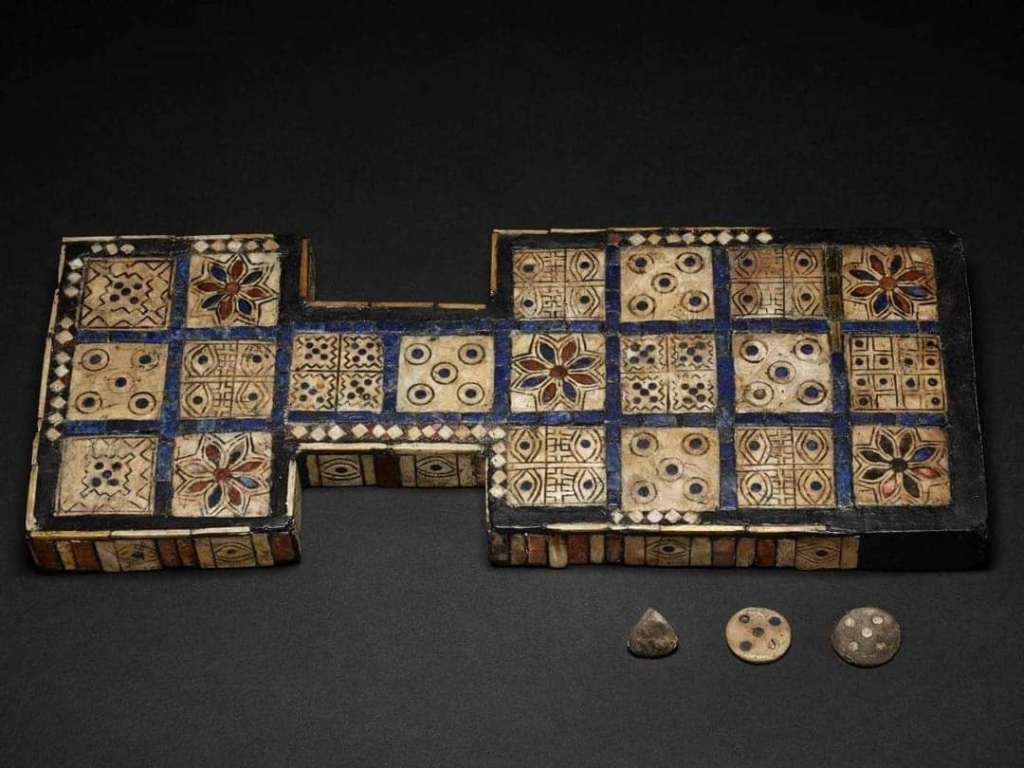
The Royal Game of Ur Iraq
This is the oldest board game in the world, and one of the most beautiful. It was found in Ur and made before 2600 BCE. The rules were similar to backgammon’s. A throw of the dice decided who went first. That player put a counter on his or her start square then threw the dice to see how many squares to move. The aim was to race all seven counters along a set path around the board, then bear them off at the finish. Landing on an opponent’s counter knocked it off the board so that it had to start again, but this could only happen when counters were moving along the central, shared row of squares.
Ancient Sumerians really knew how to enjoy life. One piece of evidence for this is so called Royal game of Ur found all over Middle East,
Everybody loves a good time, and the Mesopotamians were no exception. Sports, games and entertainment were part of their everyday life. Some games had religious or magical significance, and others were just for fun. The lunar month of the Mesopotamian calendar had 29 or 30 days. Six days were designated holidays, three lunar festivals and three more for relaxation. Both the monthly and annual holidays were times for games and entertainment.
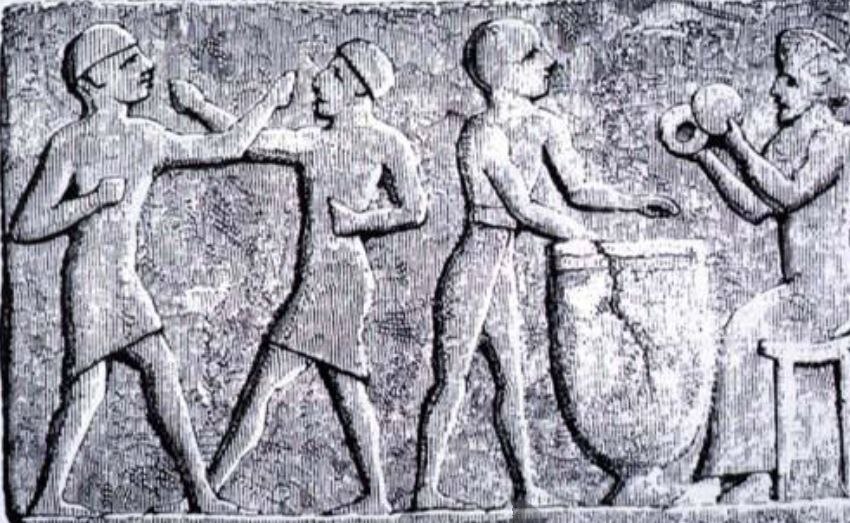
Both boxing and wrestling were depicted in art. Terra-cotta plaques showing boxers imply that boxing was a popular sport. In one plaque the boxers are beside two men beating na enormous drum, perhaps in time with their motions. In the Epic of Gilgamesh there is a reference to a wresting match between Gilgamesh and Enkidu.
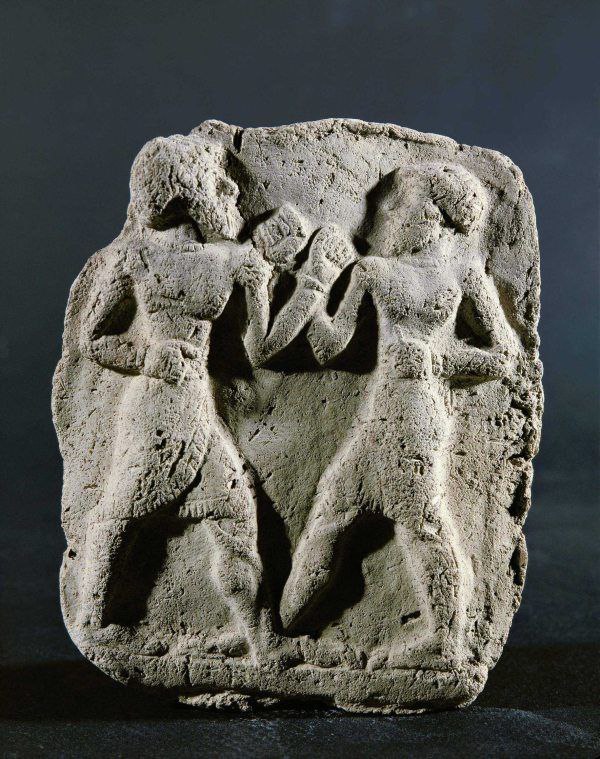
old Babylonians
.
HUNTING
The Assyrian kings were famous hunters of lions, elephants, ostriches, wild bulls and other beasts. Though the king preferred to hunt the larger, more aggressive animals, other beasts would do. The sport had both religious and political implications: as a successful hunter, the king proved that the gods favored him and that his power was therefore legitimate. Good triumphed over evil.
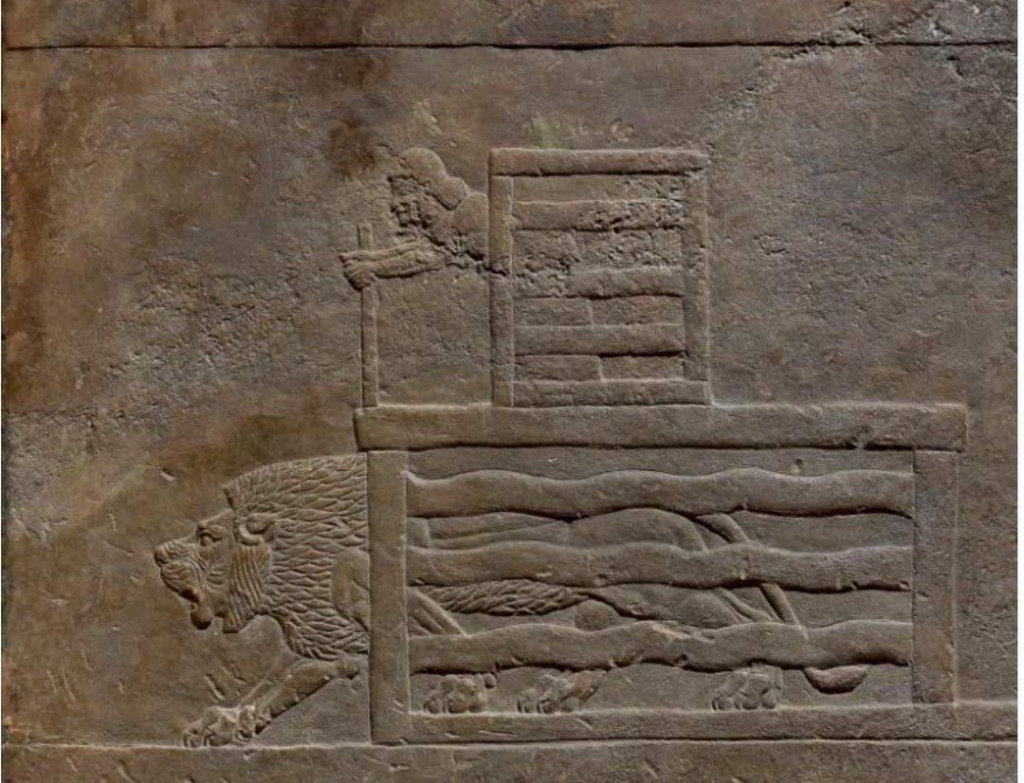
Detail of a relief showing a lion being released from a cage. Assyrian, 645–640 BC Nineveh Mesopotamia iraq
The Syrian plain was often the scene of the Assyrian royal hunt, but lions were also caught in Africa and brought to Assyria, where they were kept in game reserves until the hunt. The hunts were carefully orchestrated. From a booth above the wooden cage, a servant raised the door and released the lions, who were attacked by dogs and beaters. The beaters´ job was to beat the lions with sticks and drive them towards the king. The king killed the lions from his chariot with a bow or spear. Sometimes the king was shown on foot, killing the lion by holding the mane and thrusting a sword into his prey. The hunt became a public event. After the hunt, as part of a religious cerimony, the king poured a libation over the dead lion to atone for the harm he had done them and to appease their angry spirits. He also recited a devotional speech attributing the success of the hunt to his patron goddess. At the end of the hunt the servants picked up the dead animals. The formal hunt was continued by the Persian kings. The popularity of this sport is attested to by both information in the tablets and lifelike hunting scenes carved on countless Assyrian palace walls.
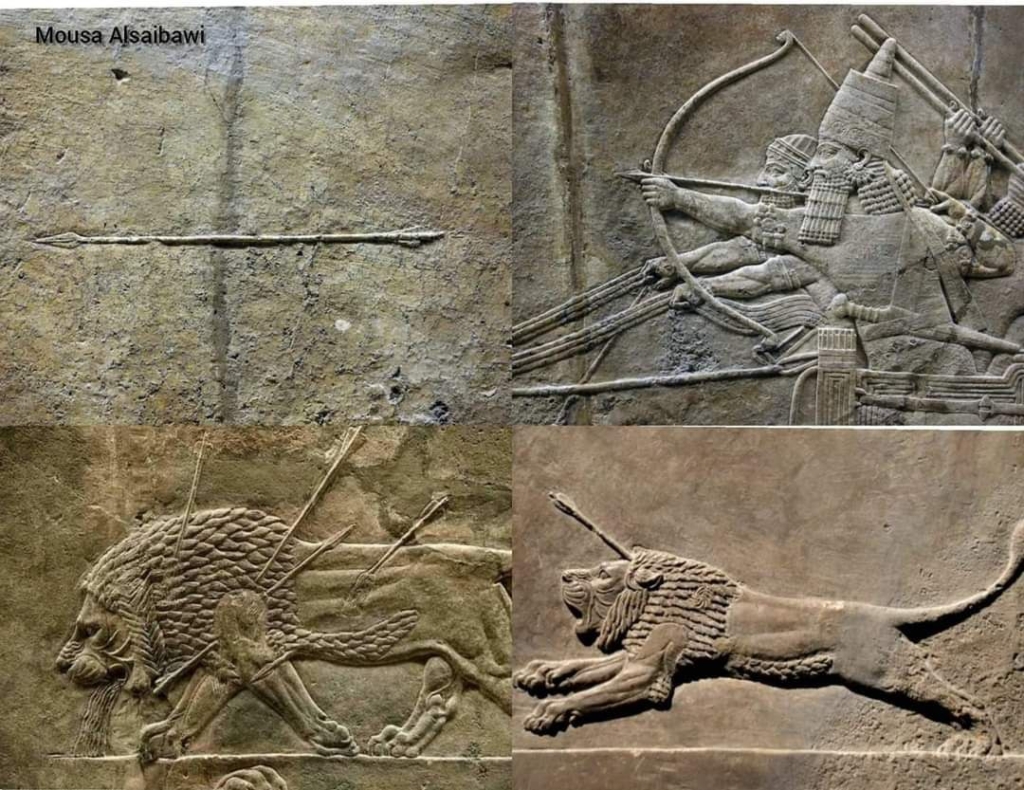
The lion hunts Ashurbanipal -details from the hall reliefs of the Palace at Ninevah iraq Ashur-pani-bal Palace
TOYS
Both action and nonaction toys have been found. Some, like today´s toy guns, were miniaturized weapons of the time; these included sling shots, bows and arrows, and boomerangs and throw sticks. Other action toys and games included the spinning top, rattles, jump ropes (sometimes called the Game of Ishtar), puck and mallet, hoop, balls (seals are shown with jugglers and balls), and the buzz or button (a disc or piece of pottery with holes for strings). Nonaction toys were used by children to play house or grown-up. For their role-playing, children used miniature furniture such as tables, beds, stools, dolls and a variety of small-sized animals. Model vehicles clearly mirrored the time with miniature carts, wagons, chariots and ships for children.
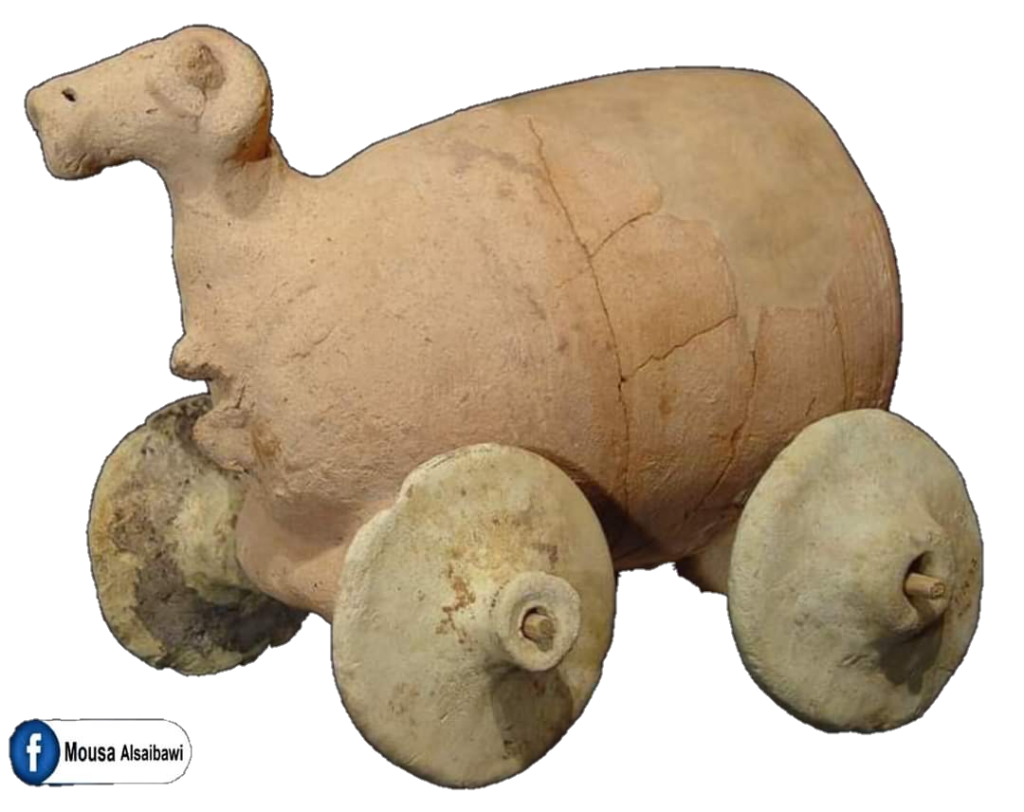
in ancient Iraq as today, children’s toys were often wheeled
This example is a ram with curving horns on wheels that could be pulled by a child. It has been designed so that the animal rests on two clay axles to which wheels are attached.Iraq, Akkadian civilization (2334-2154 BC)
BOARD GAMES
Board games have actually been recovered through archaeological excavation. The boards were usually stone or clay Some were from Esarhaddon´s palace and displayed the royal legend. Board games were played with various kinds of pieces and even dice. Two of these games were similar to those of ancient Egypt. The first, the game of twenty-squares, involved a race using pieces that moved according to rolls of the dice. The game of 20 squares was played not only by the rich, since large clay bricks have been found with the board crudely drawn. Palace guards even passed their time playing the game of twenty-squares; in fact, a game board was scratched into the pedestal of one of the pair of bull-colossi guarding King Sargon´s palace gates at Khorsabad. The second type of board game, the board of 58 holes, is an early model for cribbage.
Two lot-boards, one connected with the 12 signs for the zodiac, contained instructions on the back about how the game was played. We learn how to draw the 84 sections on the ground and the names of the pieces (eagle, raven, rooster, swallow and na unidentified bird). In fact, lot boards used a word for game piece, “doll figurine”, like man in chessman. The pieces were moved when dice made from astragals (the joint bones of oxen or sheep) were thrown.
The game, called asha is still played today by women in the Jewish community of Cochin in Southern India.
٠
DANCING
Reliefs show dancing done in time to music, singing and clapping. Dancing was mentioned in the tablets, but usually in reference to the cult and not as an independent activity. At the annual feast for the goddess Ishtar and other goddesses, whirling dances were done in her honor by both men and women. Circle dancers were usually performed by women. Acrobatic dancers took part in cultic activities.
Our Sources :
History Begins at Sumer (Philadelphia, 1956), Thirty Nine Firsts in Recorded History, by Samuel Noah Kramer, in 404 searchable pdf pages.
Selected Writings of Samuel Noah Kramer, in 570 bookmarked and searchable pdf pages.
Green، M.W. (1981). “The Construction and Implementation of the Cuneiform Writing System
Samuel Noah Kramer University of Pennsylvania Press, 1972 – History – 130 pages
- Kramer, Samuel Noah (1944). Sumerian Mythology: A Study of Spiritual and Literary Achievement in the Third Millennium B.C. American Philosophical Society. Revised edition: 1961.
- Kramer, Samuel Noah (1981). History Begins at Sumer: Thirty-Nine Firsts in Man’s Recorded History (3 ed.). University of Pennsylvania Press. I. First edition: 1956 (Twenty-Five Firsts). Second Edition: 1959 (Twenty-Seven Firsts).
- Kramer, Samuel Noah (1963). The Sumerians: Their History, Culture, and Character Samuel Noah Kramer (PDF). University of Chicago Press.
- Kramer, Samuel Noah (1967). Cradle of Civilization: Picture-text survey that reconstructs the history, politics, religion and cultural achievements of ancient Sumer, Babylonia and Assyria. Time-Life: Great Ages of Man: A History of the World’s Cultures..
- Wolkstein, Diane; Kramer, Samuel Noah (1983). Inanna, Queen of Heaven and Earth: Her Stories and Hymns from Sumer. New York: Harper & Row.
- Kramer, Samuel Noah (1988a). In the World of Sumer: An Autobiography. Wayne State University Press
- Babylon: Mesopotamia and the Birth of Civilization. Paul Kriwaczek.
Ancient Mesopotamia. Leo Oppenheim.
Ancient Mesopotamia: This History, Our History. University of Chicago.
Mesopotamia 8000-2000 B.C. Metropolitan Museum of Art.
30,000 Years of Art. Editors at Phaidon. - Treasures of the Iraq Museum Faraj Basmachi Ministry of Information, 1976 – Art, Iraqi – 426 pages
- Algaze, Guillermo, 2008 Ancient Mesopotamia at the Dawn of Civilization: the Evolution of an Urban Landscape. University of Chicago Press
- Atlas de la Mésopotamie et du Proche-Orient ancien, Brepols, 1996
- Bottéro, Jean; 1987. (in French) Mésopotamie. L’écriture, la raison et les dieux, Gallimard, coll. « Folio Histoire »,
- Edzard, Dietz Otto; 2004. Geschichte Mesopotamiens. Von den Sumerern bis zu Alexander dem Großen, München,
- Hrouda, Barthel and Rene Pfeilschifter; 2005. Mesopotamien. Die antiken Kulturen zwischen Euphrat und Tigris. München 2005 (4. Aufl.),
- Joannès, Francis; 2001. Dictionnaire de la civilisation mésopotamienne, Robert Laffont.
- Korn, Wolfgang; 2004. Mesopotamien – Wiege der Zivilisation. 6000 Jahre Hochkulturen an Euphrat und Tigris, Stuttgart,
- Matthews, Roger; 2005. The early prehistory of Mesopotamia – 500,000 to 4,500 BC, Turnhout 2005,
- Oppenheim, A. Leo; 1964. Ancient Mesopotamia: Portrait of a dead civilization. The University of Chicago Press: Chicago and London. Revised edition completed by Erica Reiner, 1977.
- Pollock, Susan; 1999. Ancient Mesopotamia: the Eden that never was. Cambridge University Press: Cambridge.
- Postgate, J. Nicholas; 1992. Early Mesopotamia: Society and Economy at the dawn of history. Routledge: London and New York.
- Roux, Georges; 1964. Ancient Iraq, Penguin Books.
- Silver, Morris; 2007. Redistribution and Markets in the Economy of Ancient Mesopotamia: Updating Polanyi, Antiguo Oriente
- Pingree, David (1998). “Legacies in Astronomy and Celestial Omens”. In Dalley, Stephanie (ed.). The Legacy of Mesopotamia. Oxford University Press.
- Stager, L. E. (1996). “The fury of Babylon: Ashkelon and the archaeology of destruction”. Biblical Archaeology Review. 22 (1).
- Stol, Marten (1993). Epilepsy in Babylonia. Brill Publishers.
- Louvre Museum
- Vatican Museums
- British Museum
- Metropolitan Museum of Art
- Rijksmuseum
- Ashmolean Museum
- Cleveland Museum of Art
- Art Institute of Chicago
- Field Museum of Natural History


